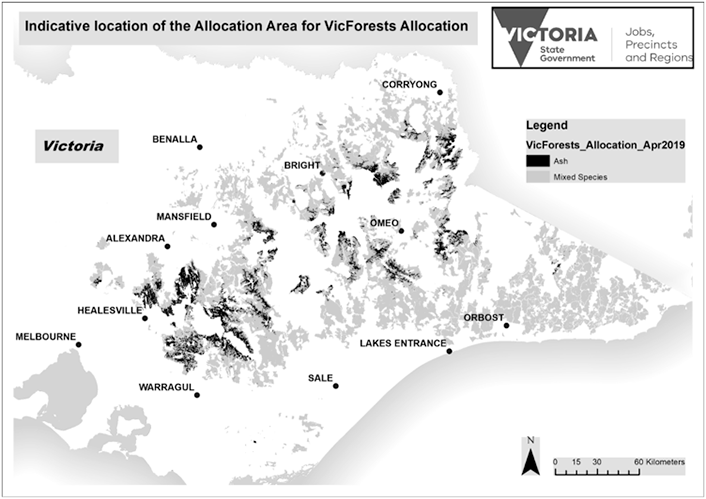Native timber harvesting in Victoria’s state forests will end by 1 January 2024.
VicForests is the Victorian Government business that manages the harvest, sale and regrowing of timber from Victorian state forests.
Harvesting regulation and management
Code of Practice for Timber Production
Commercial timber production in Victoria is regulated by the Conservation Regulator and must comply with the Code of Practice for Timber Production 2014 (as amended 2022) and Schedule 1: Management Standards and Procedures for timber harvesting operations in Victoria's state forests.
Forest operator licences (FOLS)
There is no legal requirement for forest workers in Victoria to have a Forest Operator Licence (FOL) (previously known as a Timber Harvest Operator Licence).
Some forest operation managers still require its forest workers to have a FOL.
ForestWorks provides a service called FOLS Skills Verification Program. Workers can use the online system to record their training and skills and share them with employers.
Harvest Level Review
The Regional Forest Agreements (RFAs) between the state and Commonwealth governments require Victoria to forecast and publish the Harvest Level from state forests. Reviews of the Harvest Level must happen at agreed intervals or in response to major events.
‘Harvest Level’ is broadly defined in the RFAs as the volume of timber resources that can be harvested from native forests in RFA regions in any financial year, consistent with Ecologically Sustainable Forest Management (ESFM), until native forest harvesting ceases.
The Harvest Level review is an assessment of the available timber volume as at August 2021 that meets ESFM and considers the 2019-20 bushfire impacts, as well as the Victorian Government decision to cease native timber harvesting.
Harvest Levels in this report will be in place for each financial year until formally reviewed.


